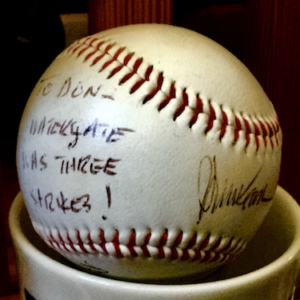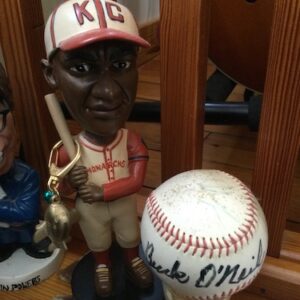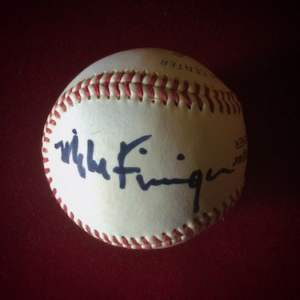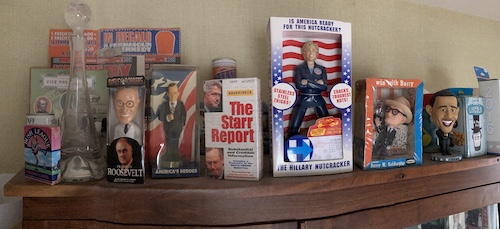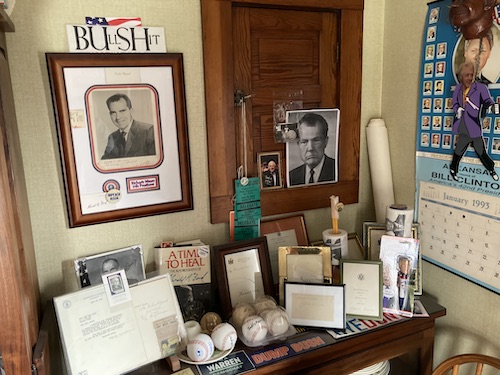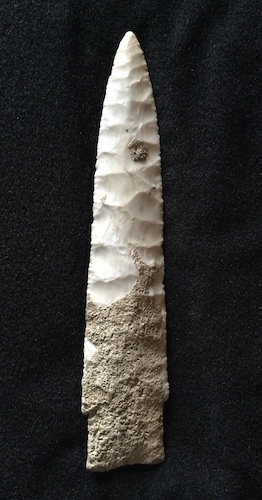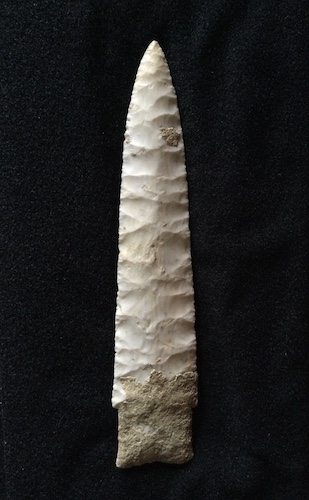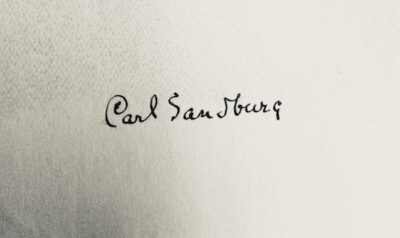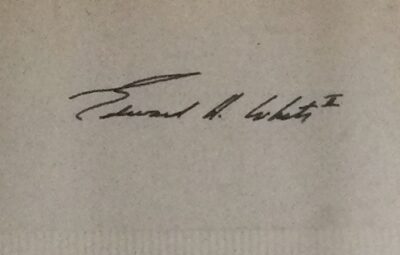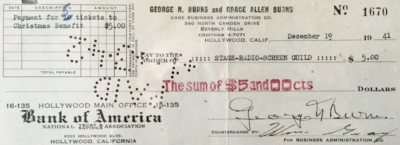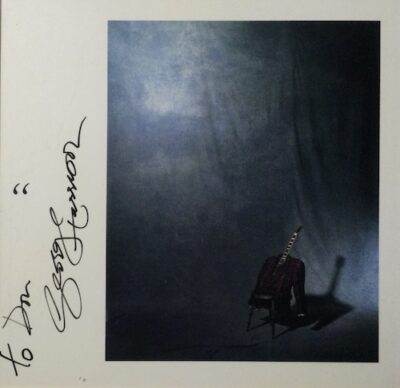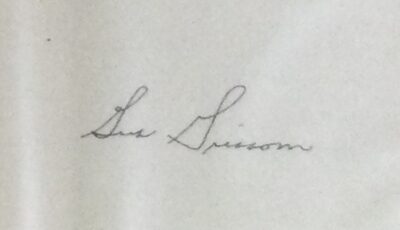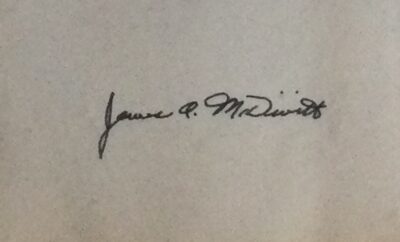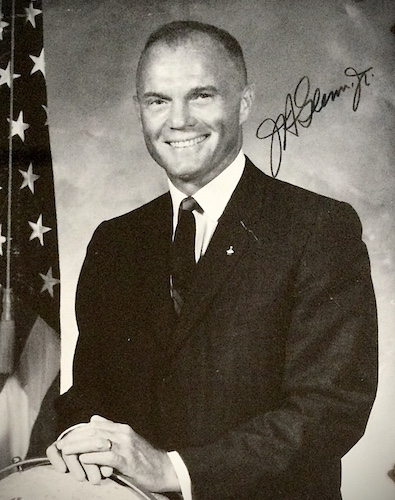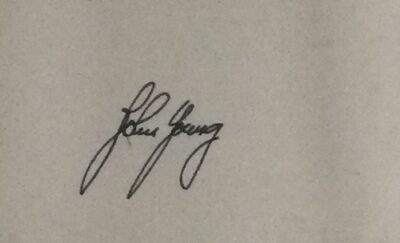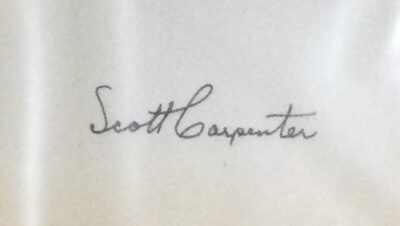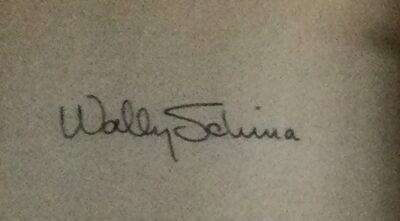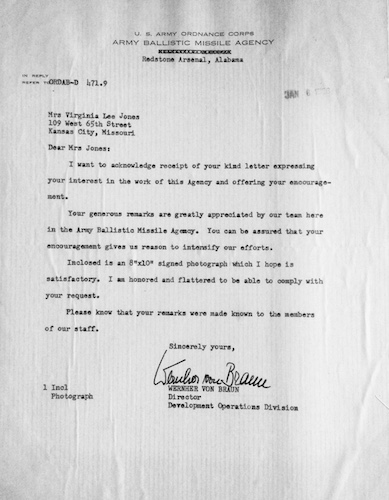Emmy Winner / “Camera Guy”: Donald Mayberger

Truthfully, when it comes to this exhibit, I don’t have the words.
A close friend and long-time collaborator of Mr. Mayberger’s once remarked: “I think that we (meaning he and Mr. Mayberger) are at opposite ends of the same continuum, each end as good or as valuable as the other. I don’t know what you would call that continuum. All I know is that if I were at his end and not mine, I would want to be exactly like him.”
I don’t know what that continuum would be called either, but I knew what his friend meant. I simply lack the words to explain it.
The time of our lives
Donald Mayberger grew up in Detroit, Michigan. When he was 12, an age full of transitions as it is, his family moved to Prairie Village, Kansas, a suburb of Kansas City, Missouri. It is fair to say that young Mr. Mayberger was alert and aware beyond his years. Perhaps it was the shock of the move, the disruption that uprooting can cause in a young person’s life. Perhaps it was a gift since birth and the good fortune of having parents who nurtured it. Whatever the reason or source, Mr. Mayberger was remarkably tuned in, sensitive to the events of the day, whether those events were large or small. The Kennedy assassination, for example… Yes, it stunned the nation, but Mr. Mayberger felt viscerally the winds of change. A dream was unfolding. Possibility was at hand (the critics be damned). And suddenly, there was what Dylan, borrowing from Shakespeare, rightly called “a murder most foul”.
The Beatles offered renewal. Mr. Mayberger heard immediately how brilliant they were. So did much of the rest of the world, but Mr. Mayberger reveled in the fine grain of their songs, the musical nuance, the humor. It was medicine for the soul. It didn’t last long. The Beatles broke up—as did many bands—and then John Lennon was killed in the doorway of the Dakota.
(From Mr. Mayberger: “One thing that might be considered missing in the story of how I got this way, was the 3 years that I spent in Massachusetts—December 1960-to August 1963, between Detroit and Kansas. JFK was president-elect when we moved there and he had two months to live after we hit Kansas. Bookends in my mind. Luckily, the Beatles happened. Almost a cliche [the JFK/Beatles turnaround] in the telling of society’s story, but the effects on 13 year old me were real.”)
These events are from long ago. Why even bring them up? Old news. And yet, these events are alive in us. They shocked us when they occurred, and they changed us. We hold a degree of tension, sadness and confusion in our bodies because of them. Add to these events Viet Nam, Watergate, Iran/Contra, Rwanda, 9/11, climate change, the election and madness of King Lear, the pandemic, and now, Ukraine … what is going on here?
One cannot help but think of Professor Tuttle’s formulation: age, culture and history, the variables that mix together to impact development, whether of individuals, generations, or society. A young person, sensitive and open, without the armor of the adult, stands naked before history unless his culture can help him make sense of his experience.
Making sense
Mr. Mayberger formulated the only view that made sense to him. Life is a Zen koan. What is the sound of one hand clapping? Show me your face before your parents met. It doesn’t make sense…
The choice, therefore, is simple. In the face of life’s contradictions, you either shut down, lose yourself in the pastimes of the day, or you put your humanity on display.
If you choose the latter, where do you begin?
Mr. Mayberger collects signed baseballs. And rarely are the baseballs signed by baseball players but instead, by musicians, politicians, dignitaries, artists; and often, with the most unusual and surprising pairing of signees (Buck Owens and Buck O’Neal, for example).

Mr. Mayberger also collects broken guitar strings. What? Why? He gets them from music stores, performance venues, amateur and professional musicians. He started rolling them into a ball, wrapping them around and around and around. Silliness? No, a work of art! His guitar string ball is now larger than a basketball. It weighs 99 pounds. Guitar strings are made of nylon, silver, bronze, nickel, stainless steel… when light catches the ball, it is a thing of beauty.

Trained as an audio/visual engineer, Mr. Mayberger traveled the country with his colleagues documenting the work of artists who live and work off the beaten track. A series of public television programs resulted, as well as a book: Rare Visions & Roadside Revelations. Mr. Mayberger was both “camera guy” and narrator for each of the programs. The public television series won nine regional Emmys.
Many of the artists documented in the series, perhaps most, never received formal training. They were individuals compelled to create a world of artifacts. Surprising, humorous, heart-rending artifacts, their own idiosyncratic answer to a basic question: What am I to do?
The ironic thing is that Mr. Mayberger could have been, himself, the focus of one of the programs. With his wife and life partner, Tresa Hill, he created a home that should be on the National Registry. It is a museum, every room an installation. There is the Presidential Suite containing paintings, drawings, sculptures, bedspreads, artwork relating to America’s recent presidents.
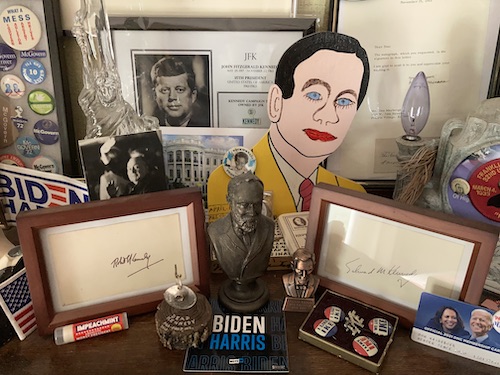
There is the third floor music room: instruments, posters, albums, CDs, videos, everywhere something interesting to consider. The whole house is like that… a collection of political campaign buttons, a history in and of itself… the notebooks of letters and autographs received from political figures, astronauts, entertainers and athletes in response to Mr. Mayberger’s letters of inquiry and sometimes, in the case of political figures, feigned support (see Addendum III).
For several years, Mr. Mayberger took a midnight walk in downtown Lawrence. He looked for money dropped on the sidewalk or in the street. Coins mostly, often near parking meters, but bills on occasion. The jar on the fireplace mantle filled as the year went by. The most he collected in any one year: 2017 — $501.09.
That same skill—of spotting what he was looking for—was exercised on the country property he owned for a while. Wooded with a small creek, it was the playground he shared with his beloved Golden Retriever, Nokona. There he found arrowheads, scores of them, varying in material. He cleaned them, arranged them beautifully in display cases, artifacts as old as the Pyramids.

Art that discloses
With every one of these endeavors—and there are others—Mr. Mayberger has made art. It is art that discloses, art that offers insight into who and what we are.
There is no category within which to place Mr. Mayberger. He is an artist of a very rare sort. His palette is populated not with paints but with the stuff of life. His artwork is about us, about how we live and behave as revealed through artifacts carefully arranged and displayed. This is to say nothing of his insightful commentary, the off the cuff remarks that illuminate a topic. There aren’t awards or formal acknowledgements for artists like Mr. Mayberger, at least not that I’m aware of. It’s unfortunate, as many more should know of and aspire to his art form.
The warehouse door
In the mid-1970s, the experimental playwright Robert Whitman, debuted his play entitled, Light Touch. It took place in a New York City warehouse near the docks. No one knew what to expect as they sat in the darkness waiting for the play to begin. Here is how the philosopher, Bruce Wilshire, describes the event:
“Then a strange event of disclosure occurred—a disclosure of disclosure. In the darkness, the main door of the warehouse in the middle of the wall before us slowly rolled up and opened. It went from floor to ceiling…the sounds of the city could be heard…and cars appeared occasionally, framed by the door, as they passed on the street directly outside. Appeared, but appeared transfigured, as if a spell had been cast over them. Details of their shape and movement, ordinarily not noticed leapt out… It was as if cars were being seen for the first time… The driver’s intent gaze on the road in front of him chipped out merely a fragment of the world in which he moved.
“After a car had passed by in this side street, the space in which we were living would relax and expand again to admit the sounds of the vast city—Then again, as if we inhabited a breathing organism, events on the street would take prominence. Slowly and majestically, matters unleafed through time, yet also sadly, as if all of us—rapt and silent inside the warehouse—were aware that the spell that had been cast was fragile. One felt grateful to be alive and conscious.”
I share Wilshire’s wonderful description of Whitman’s play simply to say that the warehouse door opened years ago for Mr. Mayberger. It’s hard to say when; only, how good it would be if it were to open for more of us. What can be said is that once it opened for Mr Mayberger, it never closed.
——————————-
Mr. Mayberger lives in Lawrence, Kansas. He continues with his many projects, one of which is the artful hosting of his friends. He can be reached at [email protected].
“As historians are wont to say, Don Mayberger is sui generis.”
Professor William Tuttle
David Thomas, PhD
Addendum I
The Point of a Lifetime
Donald Mayberger
On my birthday, December 1992, I went, with my glass blower friend Dick Rector, out to check out my friend Gary Tebor’s homebuilding project on some land that he and his wife Cima had bought just outside Lecompton. The foundation was in. This land had a history during the Kaw Valley Hemp Pickers/hippie days, with old sheds and outbuildings full of trash and abandoned stuff. But the land was cool and Coon Creek ran through the property.
I had been finding points with a friend for a few years, in plowed fields (with permission, of course) and was interested in checking out the creek. The three of us walked down to the creek bed, which was barely a trickle, to a low spot basin like turn in the flow. It was a cool, primal Kansas woodland spot. We were standing in the rock bed full of the usual drab looking stones. I believe I said that yes-this is where I would come if I was a long past native.
Then I looked down and there it was. Just laying there in the rocks, a foot in front of me. I reached down and picked it up.
Gary—“No way!”
Dick—-“He put it there.”
Of course, I did not put it there, but the Nixon in me thought, “Yes—tell them that you put it there.”
Experts have called it one of the finest Scottsbluff points ever, around 9,000–10,000 years old.
If you recall, 1993 was the year of the big rains and flooding. Coon Creek raged that year, taking out Gary’s concrete crossing and wrapping a hundred feet of wire fencing into a big ball. That point would have been long gone. Or smashed. BTW—it is almost exactly (all measurement is approximate) 7 inches by 1 1/2 inches.
Nobody “owns” it, it just travels between the three of us during the very brief time we are here.
Addendum II
The McGovern Ball
Donald Mayberger
The whole ball signed by non-ball players thing started in Chicago when I was shilling records for House Distributors (Penny Lane). We had a very successful (by our standards) selling record by George Thorogood. He was playing in a small club and I was on the guest list. He was amazing. At the break, knowing that he played semi-pro ball with the Delaware Destroyers, I took a ball to be signed.
I later added George Brett and it became the George Ball.
Many years later, at the dedication of the Dole Center events, which I worked BTW for KU, there was a reception for George McGovern, which Professor Tuttle took me to. George had worked with old Bob on world hunger, and both were WW II vets and had a close relationship. Back when there was a bit of bipartisanship. It was quite an event with important university people, Lawrence people, and I was there too. And there was free Boulevard beer! I had given a thought to the possibility of having George McGovern sign the “George Ball” in the remote chance that I got to meet him. But I opted to take a genuine foul ball from a KU game.
I was soaking it all in. It was taking place in the grand lobby of the Dole Center. After a couple of beers, I noticed McGov was standing alone, talking to nobody. It was my chance.
I told him that he was my first vote, that I had campaigned for him in Kansas in 1972 (a tough sell) and that I had attended his second largest rally of the campaign at Union Station in KC. The largest being in Boston, of course, in the only state he won.
“That was really something,” he said. “It was so crowded they had to lift me up onto the stage. It was Ernie Ladd who lifted me up. He was something!”
Then he paused for a bit, stared off into the space between us and the two I-beams, salvaged from the Twin Towers, by the stained-glass windows.
“You know, it didn’t go so well after that.” Another pause. And then he looked at me and said, “Nixon would have been better off losing that thing—considering what he had to go through.”
Such compassion for a man totally screwed by Nixon.
Again, I told him of the honor of meeting him, told him that I was sorry for all the slings and arrows that he had suffered with great dignity, and “Would you please sign my baseball?”
He looked pleasantly surprised, took out his reading glasses, and was signing my ball when Chancellor Robert Hemenway walked by and said to the Senator, “Bet ya didn’t think you’d be signing a baseball tonight.”
And that is my story and I’m sticking to it.
Addendum III
“Collecting autographs was inspired by one of my favorite teachers, Mrs. Virginia Jones, who taught 8th grade science. She collected autographs from the time she was young and taught me how to do it. She said that I did good.
“And knowing that J. Edgar was glad to learn of my “hobby” was reassuring.”
Donald Mayberger
Note: A “7” next to an astronaut’s name indicates that he is one of the seven Mercury program astronauts, America’s first astronauts. Mr. Mayberger has signatures from six of the seven.


